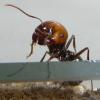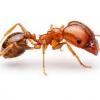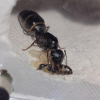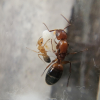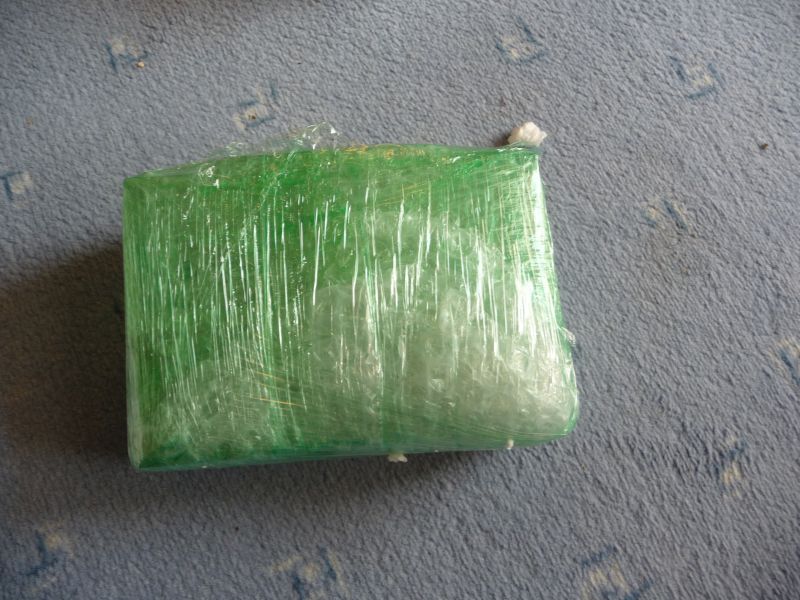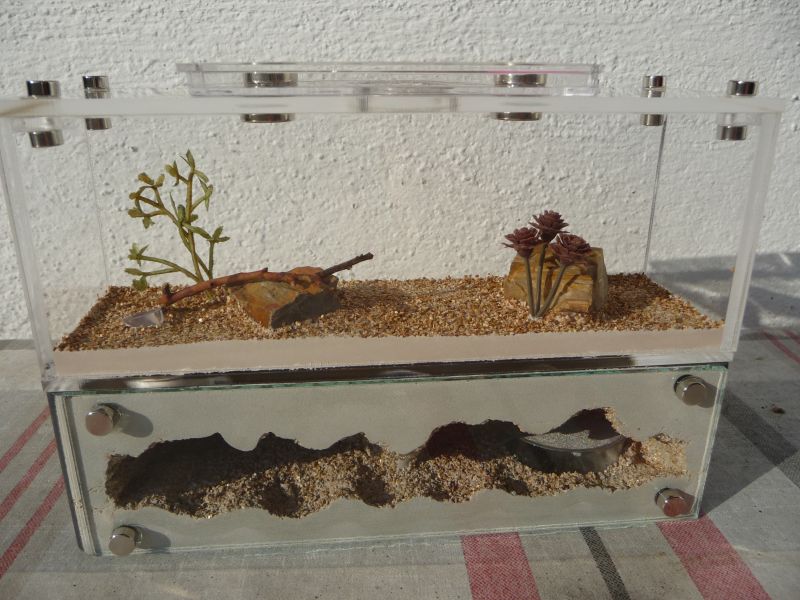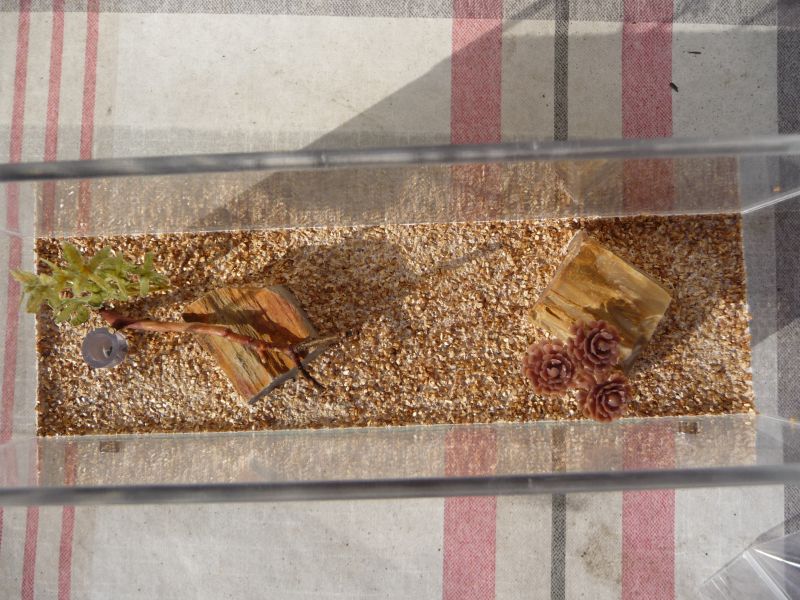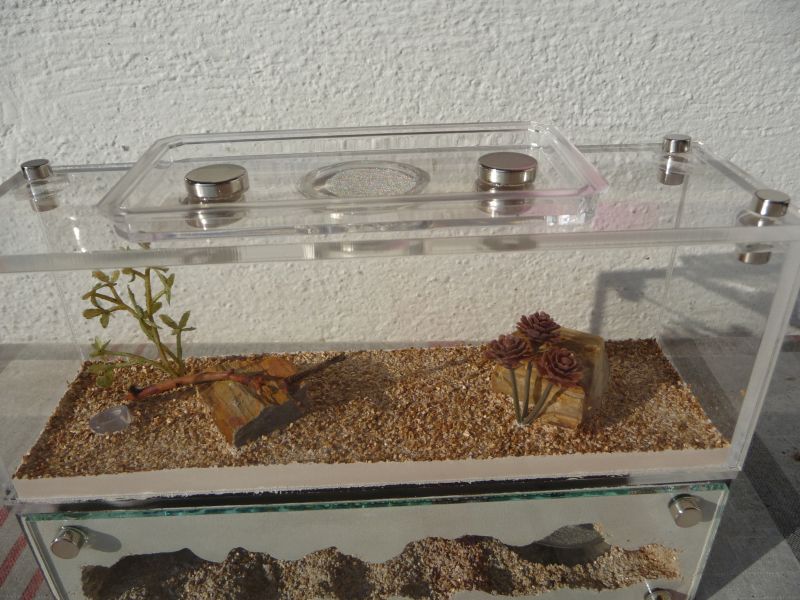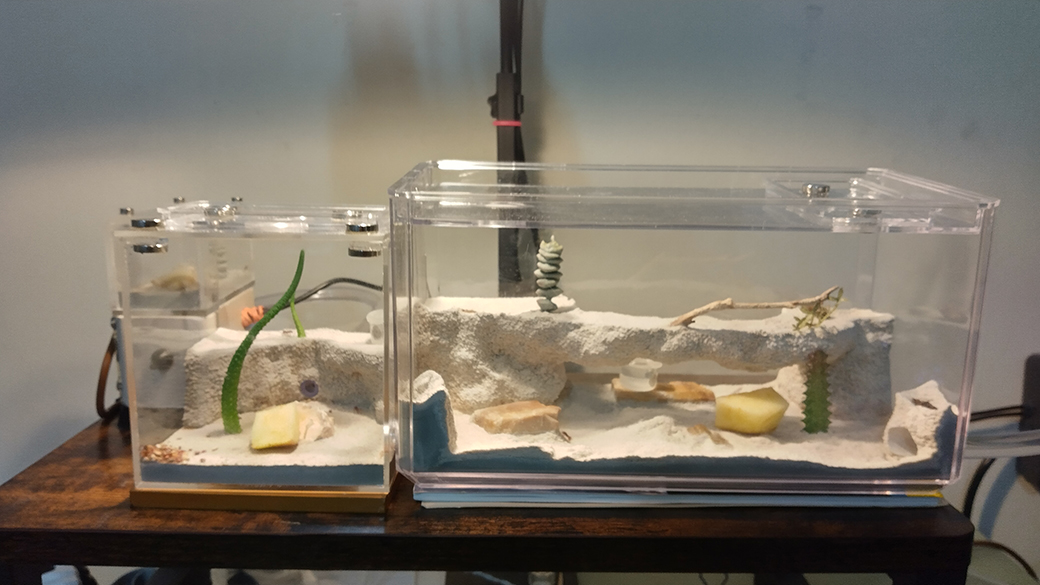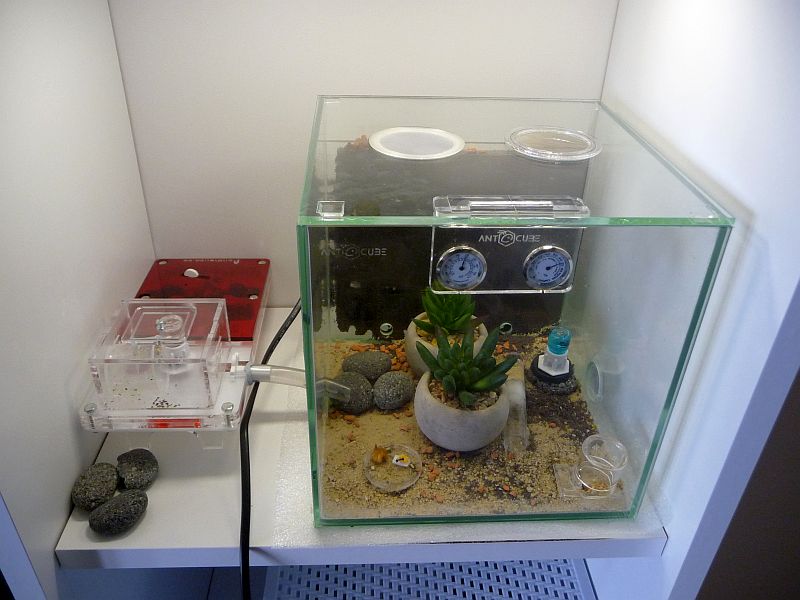I actually had sent an email with exactly then points stated above to Tarheel Ants.
And I had a very detailed and long answer today!
This is great customer service.
I love the company already, and the nest has not even shipped yet!
I will not keep it a secret, here is what the owner of Tarheel Ants, Mark Pridgen, has to say:
Seed harvesting ants will have problems in any nest if the user is not careful with the hydration method. I personally have not had any issue with them as I understand how the water towers and nestmates are filled (Google "nestmate video" and watch the first couple of minutes). If you have a situation with an acrylic nest, concrete nest, Ytong, grout, wood, any material at all really, and the seeds get wet, you will have something to be concerned about in the short term. Hopefully the ants would remove the seeds. There are ways to avoid the issue more with some planning:
1. Do not give your ants too many seeds, watch their stores carefully and limit them. A teaspoon of good seeds would last your small colony a month or so, maybe more depending on the amount of larvae to feed.
2. Do not overflow the water towers, they should only be filled 1/2 to 2/3. This is for two reasons, the first being moving the formicarium. When it tilts, water can touch the top of the screen, and this is where part of the material we use to make our nests comes into contact with the screen. This material has a very good ability to quickly absorb water, so avoid that issue if possible. The material also disperses water quickly, so if you have a small flood it is not going to kill the ant colony and will absorb quickly back into the nest. The other reason you should not fill them over 2/3 is just out of caution. Should any of that material during the creation process be slightly below the screen for any reason, again the water will be sucked up and out of the water tower.
3. Adjust with your ants....you will have two nestmates. Likely your ants will keep the seeds to the far left, away from the higher humidity. Do not add water to the nestmates if there are seed stores directly below them. Just leave it empty, or use it as a vent (the nestmates allow you to control the ventilation in the nest by either using them as a water feeder, vent, or just plugging them up). Not many people get this part right....honestly it is all over the place and there is a lot of trial and error with ants. Unfortunately with all the varying habitats of ants across species, there is not a one rule for all situation for how to manage the liquid feeding, ventilation, and heating to prevent issues.
I would try to lean on more experienced ant keepers for situational issues (not necessarily with the use of our habitats as not all understand the functionality), but those are usually the more difficult ones to find as their interest in social media fades. I am happy to help troubleshoot, and we also have a Facebook group where usually 24 hours a day someone is able to help with a suggestion. There are some of the longest running ant keepers around in that group, but again it is not always easy to find those with the best advice.
Heating Cable: Tape it to a surface, this secures it on something other than your ant colony. They are long and can be the source of major disasters should it get snagged on something moving. Push the left side of the XL Mini Hearth up against the heat cable. This is usually enough heat for most ants. You can also bring it around the front of the glass along the bottom of the glass where it touches the nest. The ants will put their brood right on the glass in these instances, and it is easy to see how this is a good transfer of heat. Taping the heat cable to the Mini Hearth or putting it underneath can work also.
Watch the videos on our Guide on the website, scroll to the bottom. These are designed for a similar species to our seed harvesting ants. Also, watch the video on the Mini Hearth as well, it can show general arrangement among other things. Hope this helps...
I will follow his advice and do exactly what he says.
I am very curious how this will work out with the Rescue Messor colony and how well they will adapt to the Tarhill nest when they are big enough to move (right now they are around 20 nanitics in a test tube, so they will have to at least triple in size before I will even attempt to move them).


